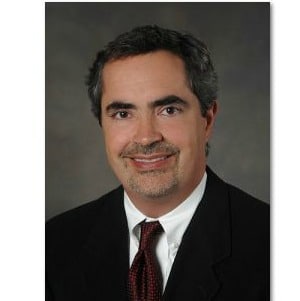
(By J Chapman) Radio again is enjoying a renaissance. We are experiencing this in spite of ever-increasing competition, new audio delivery systems, and continually emerging technologies that all compete for our listeners’ time. Last week, 92% of adults listened to free over-the air-radio. People listened and we are thriving because radio continues to be omnipresent. The delivery of our product via the FM band is the single most important factor in our continued success. Accordingly we need to protect it.
Last week, John Garziglia wrote an opinion piece in Radio Ink about what he called an “interference conundrum.” John is a friend whom I respect, and I also greatly appreciate his work in advancing the uses of translators. There is no “conundrum.” After reading his column he and I will not go hiking backwoods anytime soon unless I have possession of the map and compass. Citing an interference complaint that Woof Boom Radio has in front of the commission, Garziglia characterized our station, WMXQ, as making claims against an Emmis-owned translator – letting the reader infer it was a distant 80 miles away. While WMXQ is experiencing interference from the translator, and we did submit upwards of 70 listener complaints, WMXQ is actually less than 45 miles away from the Emmis translator. The town of Anderson (the location of most of the 70 listener complaints) is only 23 miles from our tower and 25 miles from the Emmis tower. People in Anderson can’t hear WMXQ from our Anderson Mounds Mall Studios and they couldn’t hear the 4th of July Anderson Fireworks that we synchronized to our music due to translator interference.
Woof Boom’s perspective is this: Emmis made a commitment to stop the interference. Recently they requested a license modification and the FCC granted the application. They are turning their power down to two watts, pointing their antenna away from Anderson, and they are doing it within four weeks. The people in Anderson will have WMXQ back. Getting WMXQ back into Anderson has been the outcome we have always been seeking.
Notwithstanding our situation above, there is a much bigger story of consequence for radio.
The AM revitalization effort initiated by Chairman Pai is significant not just for AM but for all of radio’s future. The FCC staff did a good job last year in rolling it out in a timely (fast) manner. Seeing a governmental agency respond in lighting speed was great relief to thousands of broadcasters. With anything this big there are always some “bumps” and there were. Some of those bumps were when an applicant filed for a translator license using engineering that is permitted (74.1204) but causes interference (74.1203) in the real world. If you are going to operate a translator, it’s essential it is done under both rule sections. Of the translator interference complaints that are in front of the Commission right now, there are a number that fall within this category. The concept of translator licenses being not only GRANTABLE but SURVIVABLE, written by Consulting Engineer, Jeremy Ruck, in last month’s Radio Magazine is a must read for anyone considering buying or investing in a translator.
In this instance, and especially true in Indiana, the Emmis W228CX antenna stands tall at 866 feet. Between the Emmis antenna and Anderson is flat farmland planted with corn – nothing to prevent a good signal from traveling long distances. In this case, it means knocking a primary service out of a community where it has served listeners for 30+ years.
A translator is a second service – meaning it can’t interfere with a fully licensed primary service station. The management of our FM spectrum is not an easy task; the FCC is doing a good job of overseeing it but with 15,000 radio stations, the Commission also needs broadcasters to work together when an initiative as big as the AM revitalization takes place. Woof Boom owns and has engineered three translators – each time we have worked to comply with both sections of the FCC rules. We’ve made big investments in translators and it is important to us that our investments remain survivable.
Soon there will be more translators. The next phase of the AM revitalization offers an opportunity in 2017 for some AM operators who don’t yet have a translator to obtain one. Already there are a number of primary stations like WMXQ receiving interference from translators. It is important for all broadcasters to responsibly protect our most valuable asset – the integrity of the limited spectrum space. AM revitalization was necessary as the AM band became compromised over the years. To those who are calling for a relaxing of the translator interference requirements, consider, the FM spectrum is finite and if it gets compromised it will be impossible to get it back. Radio faces more competition than ever and continues to thrive. We prosper because we remain ubiquitous with our delivery on the FM band. Above all else we need to protect it.
For additional background info, the Commission rules that speak to the (1) Grantability of a Translator can be found under 47 CFR Section 74.1204, and (2) Translator Survivability is found at 47 CFR Section 74.1203. Jeremy Ruck’s article can be found HERE.
J Chapman is the President of Woof Boom Radio, a locally based broadcaster that owns and operates six stations in East Central Indiana. He can be reached at [email protected]






